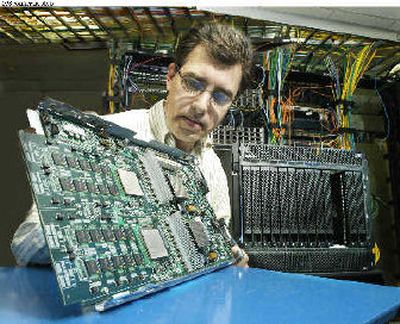IBM unveils new ‘Cell’ chip

NEW YORK —The microprocessor that will power Sony Corp.’s next-generation video game console will also run computer servers that IBM Corp., the chip’s lead designer, is pitching to the defense, medical and entertainment industries.
The “Cell” chip will make its IBM debut in a new line of “blade” servers, which are relatively thin chunks of circuitry designed to perform specialized computing tasks.
IBM envisions Cell-based blades seeing action in markets requiring sterling graphics and intensive computing, possibly finding homes, for example, in military vehicles.
“It’s not going to be a general purpose computer,” said Tim Dougherty, IBM’s director of blade center strategy. “But for certain things, it is incredible, and it will make orders of magnitude difference.”
At a demonstration Wednesday in New York, IBM showed off Cell’s processing power with a geology application that would have been right at home in a video game. A computer rendering of Mount Rainier, created using satellite photos and geological maps, allowed an operator to make a simulated flight over and next to the mountain.
Cell is slated to run Sony’s PlayStation 3 video game system, which is expected before the end of the year, and high-definition TVs from Sony and Toshiba Corp., the companies that co-designed Cell. Last month, Sony, Toshiba and IBM renewed the partnership for another five years.
Cell is touted as a game-changing “supercomputer on a chip” because of its unusual design, which includes an IBM Power processor helped by eight additional processors working together. (Versions of IBM’s Power processor are the brains inside other IBM computers and in PlayStation’s main rivals, Microsoft Corp.’s Xbox 360 and Nintendo Co.’s Revolution console, also due this year.)
While Cell’s performance is highly regarded, skeptics say it remains to be seen whether the chip will see enough broader uses to truly be revolutionary.
Before Wednesday’s announcement, Cell’s only assignment outside of Sony and Toshiba had been specialized medical and defense computers made by Mercury Computing Systems Inc.
For Cell to gain wide acceptance, IBM needs to spur outside programmers to write software that takes advantage of Cell’s prowess. That could prove more challenging than usual because Cell is architected so differently.